The Wines of Portugal
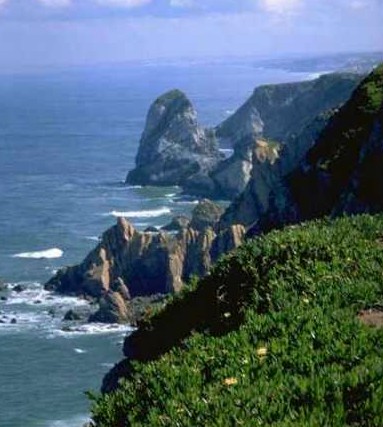 Believe it or not, the Portuguese have had a system of wine regulations in place longer than France. I must say that I was a bit surprised at that fact until I thought back to the feature we did on Port wine and remembered the long and storied history of the country's most famous export. Wine regions were demarcated and standards were instituted, but over the course of time, with the attention mainly on Port and Madeira, the other varietals were somewhat neglected. Recently, there seems to be an awakening in the wine regions focus and grape growers are again embracing the country's unique wine growing climate.
Believe it or not, the Portuguese have had a system of wine regulations in place longer than France. I must say that I was a bit surprised at that fact until I thought back to the feature we did on Port wine and remembered the long and storied history of the country's most famous export. Wine regions were demarcated and standards were instituted, but over the course of time, with the attention mainly on Port and Madeira, the other varietals were somewhat neglected. Recently, there seems to be an awakening in the wine regions focus and grape growers are again embracing the country's unique wine growing climate.
Portugal is an ideal country for wine production. Its long north-south body encompasses several distinct growing areas with unique microclimates and soils. Sound familiar? You see, the latitudes, seasons and soil content is almost identical to that of California's Napa Valley. The market is starting to see some very fine bottlings from Portugal. Also, many Portuguese producers are now venturing into the U.S. market in hopes of carving out a niche for their wines.
Starting at the beginning, Portuguese wine history is longer than the foundation of Portugal. It is also of note that since they are in such close proximity, Portugal and its neighbor Spain, share great similarities. It is believed that wine was first planted in the Iberian Peninsula (in the Tagus and Sado Valley) around 2000 B.C. by the Tartessians. When the Phoenicians conqured them in the 10th century B.C., they took over the Tartessian trade which included wine and introduced new grape varieties as well. As with Spain, it is amazing to see the varieties of cultures that have combined to make up this area of Europe. In the 7th century B.C. the Greeks settled in the Iberian Peninsula bringing their own version of grape cultivation, followed by the Celts and lastly were the Romans who brought about the modernization of the vine culture.
 Today, There are some 55 wine regions in Portugal that are either demarked DOC or IPR wine regions. An IPR wine is a wine that is under consideration for DOC designation, providing they meet certain stringent standards and qualities. There are those that see this as a sign that Portugal's grape growers and winemakers are getting serious about there varietals and could well foreshadow an explosion of fine, high end, Portugese wines into the marketplace soon. Certainly not a bad thing for we wine lovers.
Today, There are some 55 wine regions in Portugal that are either demarked DOC or IPR wine regions. An IPR wine is a wine that is under consideration for DOC designation, providing they meet certain stringent standards and qualities. There are those that see this as a sign that Portugal's grape growers and winemakers are getting serious about there varietals and could well foreshadow an explosion of fine, high end, Portugese wines into the marketplace soon. Certainly not a bad thing for we wine lovers.
This is a country caught between the traditions of its foundations and the progress and outlook of a new generation. Martin Sinkoff of Pasternak Wine Imports, sees similarities between the development of Portuguese wines and those of Spain. “Portugal is going through what Spain did, an  old world and new world conflict,” he says. “The new-world wine industry is being revolutionized by young people who have studied all over the globe and think things can be done a different way.” It will be exciting to see, and taste, the results.
old world and new world conflict,” he says. “The new-world wine industry is being revolutionized by young people who have studied all over the globe and think things can be done a different way.” It will be exciting to see, and taste, the results.
What I have found in my research for this article, is that while change is taking place, it is not neccesarilly a wholesale change as much as it is a region by region awareness. As more and more grape growers and winemakers raise their level of quality, it is spreading a likemindedness throughout the industry. The transition started about 2004 when quietly, the small country (roughly the size of Indiana), emerged as the world’s tenth-largest wine producer, ahead of countries such as Chile and New Zealand. It is currently ranked seventh.
The wine regions of Portugal
Douro
 In a relatively short period of time the Douro has established itself as Portugal’s premium wine region. It’s hard to overstate the scale and pace of change that is currently taking place in this most spectacular of wine regions. The steeply terraced vineyards contain some wonderful terroirs, but because of the economic dominance of the Port trade, it is only recently that these have been widely exploited to produce premium wines. Table wine has always been made here but, with a couple of notable exceptions (the legendary Barca Velha and more recently Duas Quintas Reserva and Quinta do Côtto Grande Eschola), it has been grim stuff, usually badly made, from low quality grapes that were surplus to the requirements of Port producers.
In a relatively short period of time the Douro has established itself as Portugal’s premium wine region. It’s hard to overstate the scale and pace of change that is currently taking place in this most spectacular of wine regions. The steeply terraced vineyards contain some wonderful terroirs, but because of the economic dominance of the Port trade, it is only recently that these have been widely exploited to produce premium wines. Table wine has always been made here but, with a couple of notable exceptions (the legendary Barca Velha and more recently Duas Quintas Reserva and Quinta do Côtto Grande Eschola), it has been grim stuff, usually badly made, from low quality grapes that were surplus to the requirements of Port producers.
Various factors have conspired to change this situation. Most importantly, a critical mass of like-minded winemakers has emerged, passionate about making the very best wines that these remarkable terroirs are capable of.
In particular, Dirk Niepoort has been a key player in recent developments in the region. As well as producing some brilliantly expressive Douro wines himself, he’s been acting as a catalyst by encouraging the leading wine producers to get together and spur each other on to greater things. There’s still very much a pioneering air here, with many of the new premium wines in only their first or second vintage. One encouraging trend is that while the quality is uniformly pretty high, there are a variety of different styles emerging, all of which still hold true to their Douro origins. Significant names here include Niepoort’s Redoma, Batuta and Charme, newcomers Poeira and Pintas, Vallado, Vale D. Maria, Vale Meão, Gouvyas, Crasto, and Chryseia.
The momentum generated by the Douro table wine revolution has led some of the Port shippers to start taking a greater interest in table wines. This is leading to improvements across the board, even with some of the more commercial wines. Having said this, the Douro is unlikely to ever be a plentiful source of cheap wine: with its high labor costs and low yields, this is an expensive place to work, and its future almost certainly lies at the top end of the market.
The Douro is not known for its white wine. The one notable exception is Dirk Niepoort’s stunning Redoma Branco (which comes in both regular and reserva bottlings), fashioned from ancient vines in cooler microclimates at the top of the slopes.
Bairrada
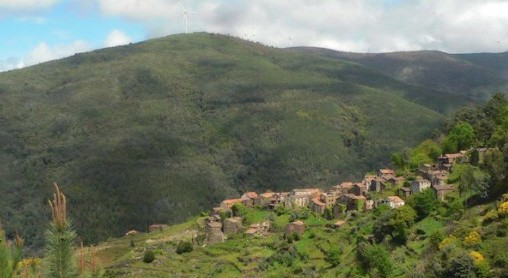 Located in the Beiras region, there are a staggering 4700 registered growers located here and most sell their grapes to the cooperatives that dominate the region’s production. It is located close to the Atlantic where ocean currents have a moderating affect on the climate. The region is bordered to the north by the Lafões IPR and to the east by the Dão DOC. The region is known for its deep colored tannic red wines that often have bell pepper and black currant flavors as well its emerging rosé production. But some estimate of the potential of this region in the fact that more than two-thirds of the vineyards here are over 50 years old.
Located in the Beiras region, there are a staggering 4700 registered growers located here and most sell their grapes to the cooperatives that dominate the region’s production. It is located close to the Atlantic where ocean currents have a moderating affect on the climate. The region is bordered to the north by the Lafões IPR and to the east by the Dão DOC. The region is known for its deep colored tannic red wines that often have bell pepper and black currant flavors as well its emerging rosé production. But some estimate of the potential of this region in the fact that more than two-thirds of the vineyards here are over 50 years old.
Dão It is one of the oldest established wine regions in Portugal. Dão wine is produced in a mountainous region with a temperate climate, in the area of the Rio Mondego and Dão rivers in the north central region of Portugal. Located inland, the Dão has cold wet winters but mild, dry summers. The granitic-soiled vineyards are at altitude, resulting in ripe grapes with good acidity, and the potential for elegant, expressive red wines. I think of it as Portugal’s Burgundy.
It is one of the oldest established wine regions in Portugal. Dão wine is produced in a mountainous region with a temperate climate, in the area of the Rio Mondego and Dão rivers in the north central region of Portugal. Located inland, the Dão has cold wet winters but mild, dry summers. The granitic-soiled vineyards are at altitude, resulting in ripe grapes with good acidity, and the potential for elegant, expressive red wines. I think of it as Portugal’s Burgundy.
Dão reds have changed beyond all recognition over the last decade. Until 1990 production was dominated by underperforming cooperatives and the resulting wines were usually tough, tannic and unlovely. Since then there has been massive improvement, and while there’s still some mediocre wine made here, the overall standard has been raised.
Alentejo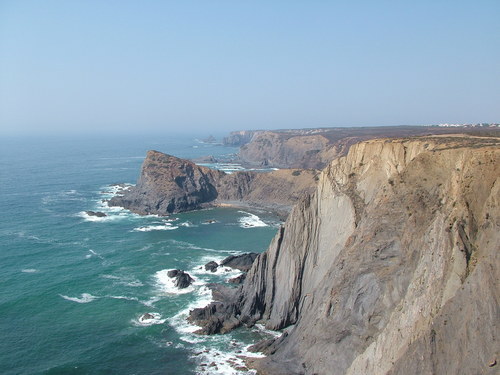 The Alentejo has led the way in Portugal’s wine revolution. It’s a region that has enjoyed tremendous success over the last decade, producing red wines in two distinctive styles. Located in the southern half of Portugal, the Alentejo region covers about a third of the country and is sparsely populated. The region is noted for it vast cork production but has in recent years garnered attention for its table wine production. Much of this area is given over to cereal production. It’s also hot, and irrigation is common. In contrast to the northern regions, with their fragmented smallholdings, production is dominated by large, professional outfits.
The Alentejo has led the way in Portugal’s wine revolution. It’s a region that has enjoyed tremendous success over the last decade, producing red wines in two distinctive styles. Located in the southern half of Portugal, the Alentejo region covers about a third of the country and is sparsely populated. The region is noted for it vast cork production but has in recent years garnered attention for its table wine production. Much of this area is given over to cereal production. It’s also hot, and irrigation is common. In contrast to the northern regions, with their fragmented smallholdings, production is dominated by large, professional outfits.
Two of Portugal’s most high-profile winemakers have been key in developing the reputation of Alentejo wines. First, João Portugal Ramos, celebrated consultant winemaker and now with his own estate at Estremoz. The second is David Baverstock at Esporão, who also consults for a number of estates in the Douro. The great success of the Alentejo has been in making thoroughly modern, concentrated wines that still retain a distinctly Portuguese character.
Ribatejo
 Located between the Estremadura and Alentejo VRs, the region is dominated by the influence of the Tagus river. The river moderates the region's climate, making it more temperate than other areas of Portugal. Vineyards are planted on the fertile alluvial plains along the river and can be prone to producing excessive yields. For a long time the provider of bulk wine, the Ribatejo is now emerging as an exciting source of modern-styled commercially astute red wines. The soils on the banks of the river Tagus produce soft-textured, ripe, drinkable reds in the sorts of quantities and at the price points that excite supermarket buyers. Further up, on the stonier soils more serious wines can be made. Unlike most other Portuguese regions, foreign varieties such as Cabernet Sauvignon and Merlot are quite common here, and seem to do well. The future looks relatively bright for the Ribatejo.
Located between the Estremadura and Alentejo VRs, the region is dominated by the influence of the Tagus river. The river moderates the region's climate, making it more temperate than other areas of Portugal. Vineyards are planted on the fertile alluvial plains along the river and can be prone to producing excessive yields. For a long time the provider of bulk wine, the Ribatejo is now emerging as an exciting source of modern-styled commercially astute red wines. The soils on the banks of the river Tagus produce soft-textured, ripe, drinkable reds in the sorts of quantities and at the price points that excite supermarket buyers. Further up, on the stonier soils more serious wines can be made. Unlike most other Portuguese regions, foreign varieties such as Cabernet Sauvignon and Merlot are quite common here, and seem to do well. The future looks relatively bright for the Ribatejo.
Estremadura
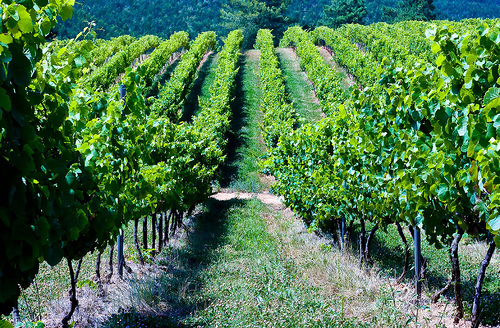 A long, thin region running up the Atlantic coast from Lisbon, Estremadura has struggled in the past as a producer of bulk wine from tired cooperatives. While the region is still quite a mixed bag, there are some impressive wines emerging at both the quality and volume ends of the market. As in the Ribatejo, it’s not uncommon to find international grape varieties planted here. The dominant figure in Estremadura is winemaker José Neiva, of DFJ Vinhos. Dubbed the João Ramos of central Portugal, his company makes a broad range of overtly commercial red wines characterised by their ripe, accessible fruit, lush textures and good concentration, all at very affordable prices. Neiva is quite open about the interventionist winemaking techniques that he uses to wring every drop of flavour from his grapes. Some appealing fruity whites are also made here.
A long, thin region running up the Atlantic coast from Lisbon, Estremadura has struggled in the past as a producer of bulk wine from tired cooperatives. While the region is still quite a mixed bag, there are some impressive wines emerging at both the quality and volume ends of the market. As in the Ribatejo, it’s not uncommon to find international grape varieties planted here. The dominant figure in Estremadura is winemaker José Neiva, of DFJ Vinhos. Dubbed the João Ramos of central Portugal, his company makes a broad range of overtly commercial red wines characterised by their ripe, accessible fruit, lush textures and good concentration, all at very affordable prices. Neiva is quite open about the interventionist winemaking techniques that he uses to wring every drop of flavour from his grapes. Some appealing fruity whites are also made here.
Rios do Minho and Vinho Verde
 The name literally means "Green Wine", referring to its youthful freshness rather than its color. The main export markets are France, the United States, and Germany, followed by Angola, Canada, and the United Kingdom. The region is characterized by its many small growers, which numbered more than 60,000 as of 2005. Many of these growers train their vines high off the ground, up trees, fences, and even telephone poles so that they can cultivate vegetable crops below the vines that their families may use as a food source. Rios do Minho is a Portuguese wine region covering the same areas as the Vinho Verde DOC. The region is classified as a Vinho Regional (VR), a designation similar to a French vin de pay region. The wines of the Rios do Minho and Vinho Verde are nearly identical except for the Rios do Minho VR allowing foreign grape varieties to be used that are excluded from the Denominação de Origem Controlada (DOC) regulations for Vinho Verde.
The name literally means "Green Wine", referring to its youthful freshness rather than its color. The main export markets are France, the United States, and Germany, followed by Angola, Canada, and the United Kingdom. The region is characterized by its many small growers, which numbered more than 60,000 as of 2005. Many of these growers train their vines high off the ground, up trees, fences, and even telephone poles so that they can cultivate vegetable crops below the vines that their families may use as a food source. Rios do Minho is a Portuguese wine region covering the same areas as the Vinho Verde DOC. The region is classified as a Vinho Regional (VR), a designation similar to a French vin de pay region. The wines of the Rios do Minho and Vinho Verde are nearly identical except for the Rios do Minho VR allowing foreign grape varieties to be used that are excluded from the Denominação de Origem Controlada (DOC) regulations for Vinho Verde.
Varietels
Alvarinho - White
One of the main varietals used in Vinho Verde, Alvarinho (pronounced Al-va-rin-yo) is grown mainly in the Minho region and yields mostly dry, medium to full-bodied, aromatic whites that often feature fruity notes of citrus.
Aragonez (Tinta Roriz in northern Portugal) - Red
Known in Spain as Tempranillo, Arragonez is a key varietal used in the making of Port wine as well as many Alentejo wines. With its thick, dark-skinned berries, it typically produces well-structured fruity wines with softer tannins and lower acidity.
Baga - Red
Planted primarily in the Bairrada DOC, Baga grapes typically feature high acidity and tannins as well as intense fruity colors and aromas, and age quite well.
Fernão Pires (also called Maria Gomes) - White
With its oval-shaped grapes, this versatile variety has a shorter cycle and early maturation. It is used in a wide range of white wines and typically produces floral aromas and citrus notes, a complex palate, and high alcohol levels.
Periquita (also called Castelão) - Red
Sometimes used in Port wine production, Periquita is a popular grape used more often in southern Portugal, which grows best in sandy soils but can adapt to a variety of conditions. Wines made from Periquita are usually quite tannic and fruity but soften quite well with age.
Touriga nacional - Red
Widely regarded as Portugal's finest varietal, the Touriga Nacional grape is low-yield and small but concentrated with tannins, black fruit notes, sweetness and color. As one of the top grapes used in top Port blends, it provides structure and body to table wines and is often used in high-quality reds from the Douro and other regions.
Trincadeira - Red
A highly popular grape which performs best in dry, hot climates and often produces hearty reds rich with fruity and spicy notes as well as floral aromas.
From the North to the South, the country is wealthy in good wines and, apart from the unique Port and Madeira, there are more than one hundred different varieties of wines, ranging from table wines to special ones, all of them reflecting the individual character of their respective soil.
Port Wine
"Tinto aloirado" (rubis colour) - It has aged for a few years, has a golden red colour, equally sweet and with a strong fruity bouquet.
"Aloirado" (golden colour) - It is an older wine, the result of the combination of several special wines: it has a hot topaz colour: semi dry and sweet: it can be of very first quality.
"Aloirado claro" (lighter golden) - This is a wine which has reached the last stage of the aging process in barrels. It has reached the peak of its career: aged golden colour. These are the more common types of wine, but there are also numerous varieties of white Port Wine, especially within the dry and extra dry sector. The Port wine Institute assures the authenticity of any Port wine, whether it proceeds from a blend of several crops, or whether it is a vintage, a reserve, or a 10, 20, 30 or 40 years old Port. The Institute provides certificates of origin to all exported Ports and warranty seals to all Port wines bottled in Portugal.
Madeira Wines
Sweet and mellow ("Malvasia"), dry and austere ("Sercial"), somber and semi-dry ("Verdelho") or semi-dry, rich and full ("Boal"): all the varieties of this wine have a refined fruity bouquet that you will relish as a dessert or as an appetiser.
Vinho Verde
It is a light bubbling wine, hardly sweetened and with a low alcoholic content (appr. 10 %); you will find it sometimes refreshing and other times warm; the white Vinho Verde is the perfect companion for seafood, fish and liver pate.
Douro Wines
The fruity are wines of excellent quality, with strong colors. The white wines are also served with fish and liver pate. The red ones are served with game, fow1 and strong cheeses.
Dão Wines
They have an alcoholic content ca. 11-13 percent, and have a fine and velvety flavour. The red ones have a beautiful ruby colour, and can be harmoniously combined with game, spicy meat and cheese. The white ones are light, with a citrus tone, and are usually served with game, grilled meat and the strong cheeses of the region. The white wines are refined and aromatic.
Alentejo Wines
The most famous vineyards of the Alentejo region are those of Borba, Reguengos de Monsaraz, Vidigueira, Cuba and Alvito. The white wine production is more important than that of red wine. Nevertheless, both types are ideal companions for the delicious regional specialities.
Colares Wines
The red wines are a perfect complement to game and red meat, whereas the white should be served chilled with fish, pasta and powerful cheeses.
Bucelas Wines
Very acid when young, and dry after aging; they should be served with not very spiced fish.
Setúbal Wines
The "moscatel" grape is grown in this region. The wine produced from such grape is smooth and perfumed, like honey, when it is five years old, or richer and even more subtle after reaching twenty five years of aging. It is to be served as a dessert wine.
Algarve Wines
These wines are light, velvety, fruity and not very full-bodied; its alcoholic content is higher than 13 percent. The red wines are served with grilled meat and codfish. The white ones are the perfect appetiser.
A few for your consideration...
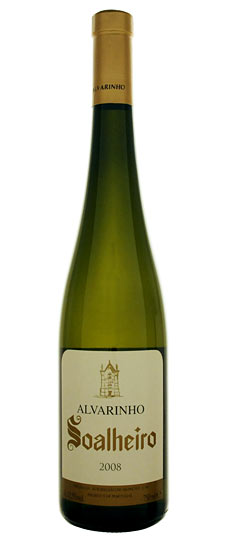 Ferreira Soalheiro Alvarinho Vinho Verde 2008
Ferreira Soalheiro Alvarinho Vinho Verde 2008
Nose of jasmine flower, citrus, and nectarine. The palate is quite flavorful with wet stone, steely minerality, and citrus fruit notes. The style is dry, medium bodied, with lively acidity, and a long finish. This wine is lean and mineral driven with a focused intensity when young but transforms with gorgeous smoky citrus nuances with a bit of age. 92 points Wine & Spirits: "The aromas are shut down at first, offering little more than a scent of dried hay.
Esporao Private Selection Alentejo Red 2005
 Smoky, licorice aromas. Medium body, medium-high acidity and tannins, juicy with a bright and long finish. From a 20-year old vineyard overseen by Esporao's renowned winemaker David
Smoky, licorice aromas. Medium body, medium-high acidity and tannins, juicy with a bright and long finish. From a 20-year old vineyard overseen by Esporao's renowned winemaker David 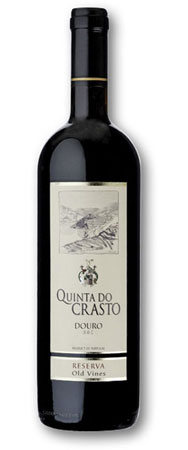 Baverstock. Malolactic and aging both take place in new French oak.
Baverstock. Malolactic and aging both take place in new French oak.
Quinta do Crasto Douro Reserva Old Vines 2005
Up to 30 different grape varieties from old-vine vineyards compose this refined blend. Some of the grapes are foot-trodden in lagares during initial fermentation, and the wine is then aged 18 months in French (85 percent) and American oak. It is neither fined nor filtered before bottling. With intense aromas of blackberries and raspberries on the nose, the palate is bursting with wild berry characters. This is a wonderfully well balanced wine with great length.


